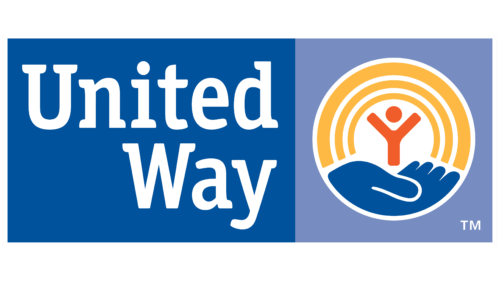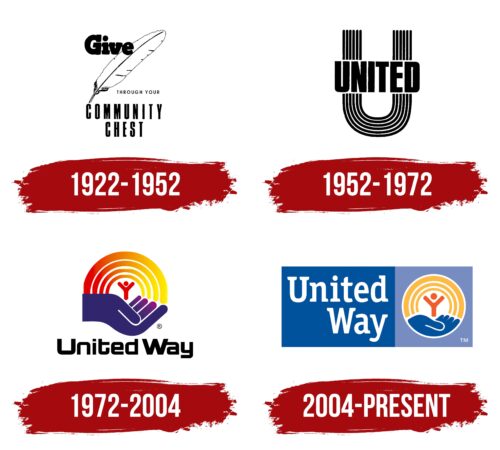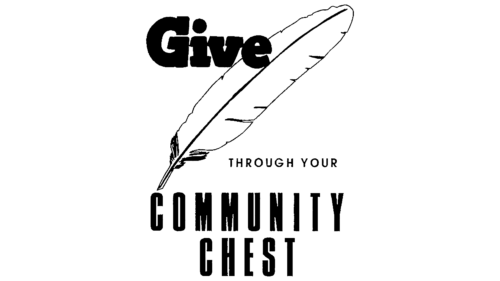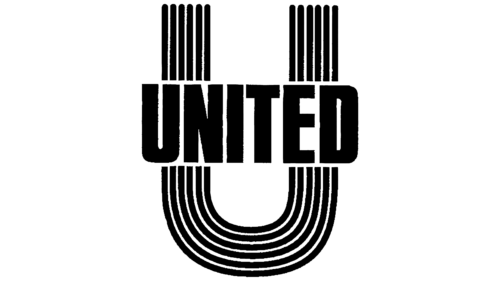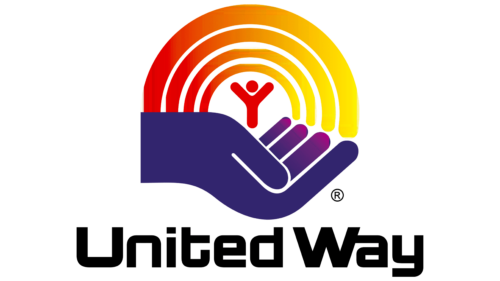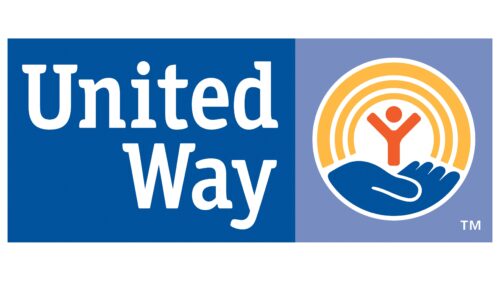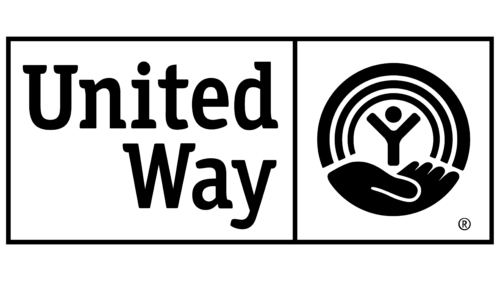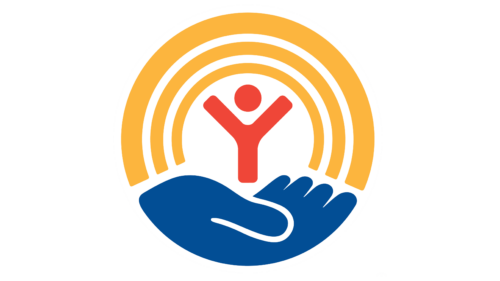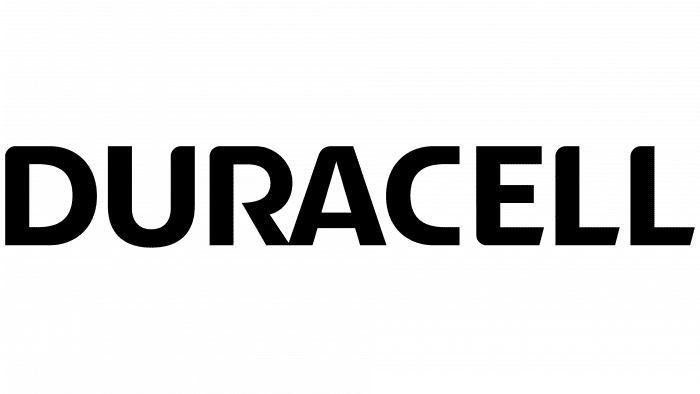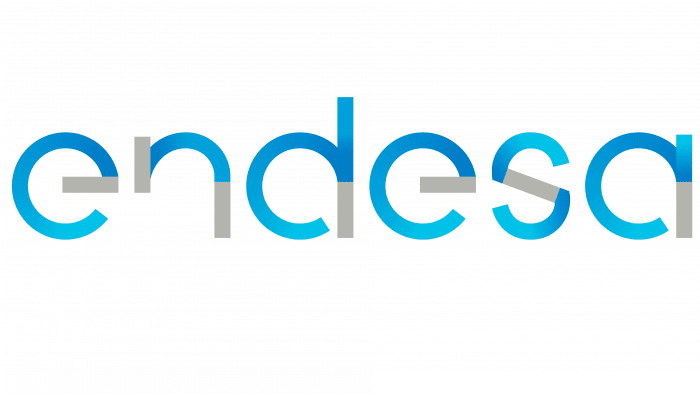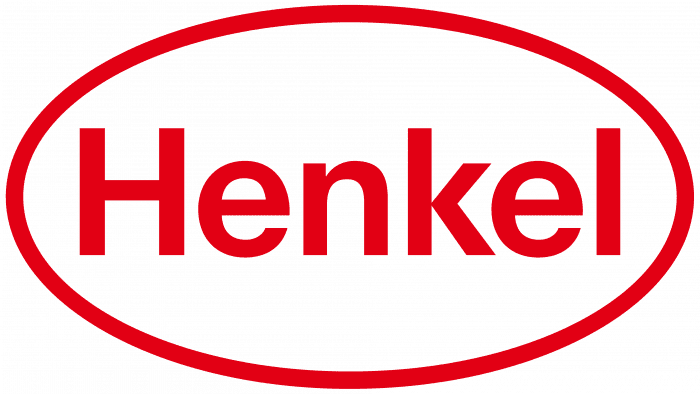The international network of organizations that collect donations must be credible. Therefore, the United Way logo symbolizes care, tenderness, kindness, and safety. With the help of allegorical and abstract images, the designers portrayed the desire to help those in need.
United Way: Brand overview
| Founded: | 1887 |
| Headquarters: | Alexandria, Virginia, U.S. |
| Website: | unitedway.org |
The United Way makes it easy to bring outside resources for charitable purposes. Essentially, it’s a network that any nonprofit fundraiser can join. The main thing is that it meets several criteria and pays regular membership fees. Mandatory contributions are payment for the brand licensing rights: each branch receives a logo, name, and other elements of the United Way’s identity. Members remain independent of the parent company and can opt out of the common visual identity if they wish, as the Central Community Chest of Japan did.
The United Way operates on a franchise model, but that wasn’t always the case. The old system was based on the amalgamation of several local organizations that operated under a single name. The first endowment fund appeared in 1913 when the Cleveland Community Chest was created in the United States. Another event preceded this: in 1887, several activists founded Charity Organisation Societies to simplify the collection and distribution of funds for charity. As a result, 1887 is considered the year United Way Worldwide was born.
After WW2, the Community Chest movement was transformed into the United Fund and focused on fundraising among employed citizens of the US: money was automatically deducted from each paycheck.
Meaning and History
The United Way got its current name in 1970. And in 1972, they created their original logo with a man standing on his palm. It was used for the next 32 years until it was changed. Despite the redesign, the basic graphic elements remain.
What is United Way?
United Way is a brand used by nonprofit organizations to organize themselves into one large network. United Way Worldwide manages it. It oversees the collection of donations and distributes them to all affiliates. Participating agencies pay a membership fee of 1 percent of the total funds raised.
1922 – 1952
The concept of Community Chest became popular after 1913, when the first fund was created in the United States, coordinating the collection of donations for 22 nonprofit agencies. More and more organizations in different cities joined this movement, so Community Chest needed a recognizable visual identity. In 1922, a logo appeared with a picture of a goose feather, which had previously been used as a writing instrument. It was white, without details. There were black outlines along the edge.
In the upper left corner was the word “Give,” consisting of bold letters with large serifs. Under the pen was the phrase “THROUGH YOUR,” aligned on the right edge and written in fine, sans serif type. At the very bottom was the name of the Community Chest. It was divided into two lines and centered. The glyphs that were part of it had a disproportionate shape: the designers chose a bold grotesque, elongated vertically, for this inscription. Its closest counterpart among modern typefaces is the Dharma Gothic C Heavy Dharma Type.
1952 – 1972
In 1949 the first United Fund was created in the United States. It managed to raise a record amount of funds, so the campaign began to spread actively among charities. Many Community Chest affiliates included the word United in their name, so the movement decided to change its name to United Community Funds and Councils of America.
Around the same time, a logo began to be used with a large “U,” consisting of six thin black lines. Its integrity was broken by the same black word, “UNITED.” The big, bold letters were in a white rectangle. The font resembled something between XXII DONT-MESS-WITH-VIKINGS HARDCORE by Doubletwo Studios and Akkordeon Nine by Emtype Foundry.
1972 – 2004
The logo changed after the charitable network was transformed into the United Way. The original symbol for the new brand was created by Saul Bass, the famous American designer who had designed the posters for the Alfred Hitchcock thrillers and the Stanley Kubrick feature films. He depicted a helping hand supporting a little man in the shape of a “Y” with a pointy head. The figure was under an arch of four strips of different widths. The peculiar rainbow on the left side connected to the wrist and on the right touched the four fingers without merging with them.
The lower half of the hand was dark blue. A little higher up, that color took on a purple hue. A gradient was used for the rainbow: going from purple to red, then to orange and yellow. And the little man was completely red. At the bottom was a black “United Way” inscription, the typography for which was created by Saul Bass. He took the bold grotesque and added personality to the glyphs.
2004 – today
The new logo that the designers worked on in 2004 is a direct continuation of the old concept. It inherited the so-called helping hand, but the color and shape of the elements are now completely different. Unlike the previous version, there is no gradient here. Only the palm without the wrist is left from the hand, and its lines have become smoother and softer. This part of the emblem is entirely blue. For the little man, not such a bright red as before was used, but a warm one with an orange tint. The torso and arms, depicted in the form of the capital letter “Y,” no longer have rounded ends.
The number of stripes in the rainbow has been reduced to three, which are now monochrome – light orange. The palm supporting the man is in a white circle. The latter, in turn, is depicted inside a light blue square. A dark blue rectangle of the same height adjoins it on the left. It asymmetrically contains the white name United Way: the two words are aligned on the right side. This shift creates the effect of movement and looks modern. For the lettering, a bold font with massive serifs is used, which was developed based on Avenir.
Font and Colors
Each element of the United Way logo has a special meaning. For example, the rainbow represents hope. The hand cradling a person symbolizes support because the international network is constantly helping those in need. But there’s another hidden metaphor here – balance. The figurine balances on the palm of the hand in the same way that charities balance the capabilities of different segments of society, fighting social inequalities. These associations are intensified by the triumphant pose of the little man, who is rejoicing with his hands raised above his head and spreading them apart as if to express rapture.
A unique set of glyphs was developed for the word mark, which has been used since 2004. It is based on the standard Avenir font. The designers changed the letters so that they matched the round shape of the emblem. In doing so, the capital “W” and the lowercase “a” merge at the top point. This is how the designers decided to reflect the concept of unity. A similar typeface is ITC Officina Serif Medium by Erik Spiekermann.
The color scheme of the United Way logo is very diverse, despite the lack of a gradient. It contains two shades of blue (dark #005191 and light #539ED0), red (#FF443B), yellow (#FFB351), and white (#FFFFFF).
United Way color codes
| Medium Electric Blue | Hex color: | #00529c |
|---|---|---|
| RGB: | 0 82 156 | |
| CMYK: | 100 47 0 39 | |
| Pantone: | PMS 2945 C |
| Wild Blue Yonde | Hex color: | #778dc1 |
|---|---|---|
| RGB: | 119 141 193 | |
| CMYK: | 38 27 0 24 | |
| Pantone: | PMS 7682 C |
| Pastel Orangek | Hex color: | #feb944 |
|---|---|---|
| RGB: | 254 185 68 | |
| CMYK: | 0 27 73 0 | |
| Pantone: | PMS 1235 C |
| Neon Orange | Hex color: | #f15d2a |
|---|---|---|
| RGB: | 241 93 42 | |
| CMYK: | 0 61 83 5 | |
| Pantone: | PMS 1655 C |
